
Josh & Jem unexpectedly had the opportunity to both get a Covid (Astra Zeneca vaccination) down in Cairns, something they had thought they may need to return to New Zealand for, so they were understandably keen to combine exploring the Bloomfield track with getting the vaccinations. They left us at ‘Home Rule’ in Rossville & we expect to see them again at the Laura Dance Festival.
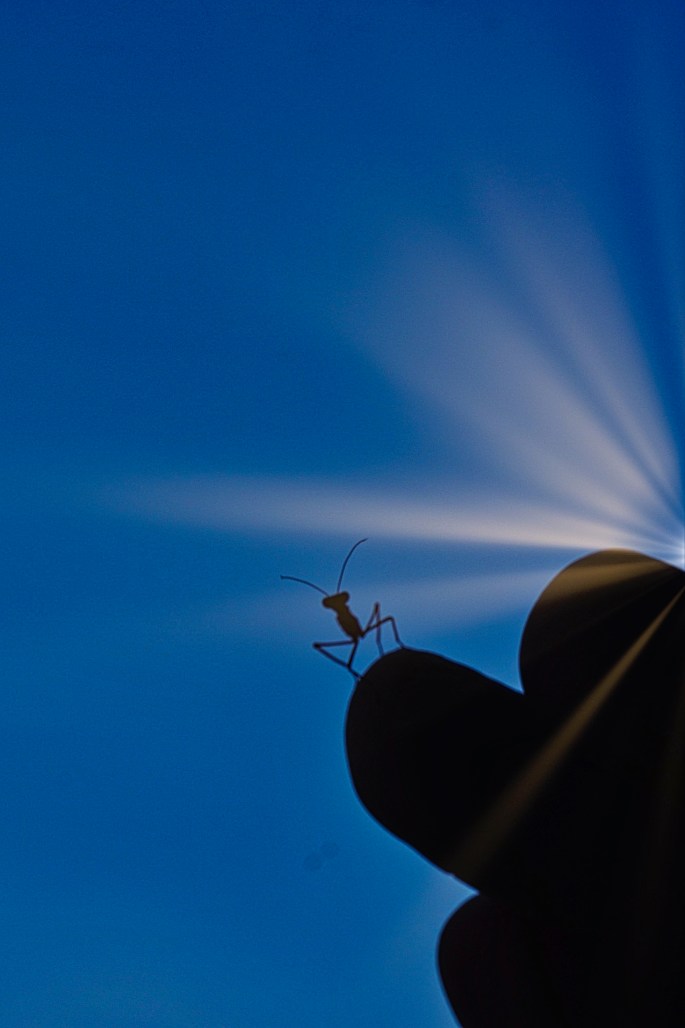
It seems that what to us has appeared to be an ad hoc ‘political rather than health’ approach to the rollout of the vaccines, things may now be changing for the better ? Hard to tell when the only news we get is once every few days when we remember to listen to the ABC 7pm news on the AM radio band. (When we are able to get a signal, it is mostly un-listenable, but is boosted for the 7pm news bulletin).

Prior to leaving Mutchilba we had appointments booked for the first Astra Zeneca ‘jab’, made prior to the emergence of info about the risk of the ‘blood clotting side effect’. When this became known, we became a little nervous. Whilst accepting the risk as being very low, the scary part (to us) was that if it were to happen it would be when we were in a remote area, quite possibly several days drive from even rudimentary health services & much further from any intensive care units. Nevertheless, despite our concerns we did decide to take the risk & get the vaccinations………. until………… we phoned around to determine if/when we could get our second follow up shots somewhere on Cape York.

The Covid Hotline folk were about as useful as hairs on a snake’s armpit. They thought that Cape York was a Brisbane suburb & when we patiently explained where Cape York was, they apologised, telling us they had no information. It was clear we needed to make our enquiries more directly, – to the horses mouth as it were. We phoned every health clinic on the Cape, plus the hospital at Bamaga. All were keen to help as best they could, but the story from all was consistent. They didn’t know when they would get the vaccines, nor whether they would only get Astra Zeneca, Pfizer, or both. There appeared to be a general belief that there would be vaccination teams touring the various Cape York communities sooner or later aiming to vaccinate entire communities over two day periods, & if we were in the right place at the right time we would be welcome to get our shots.
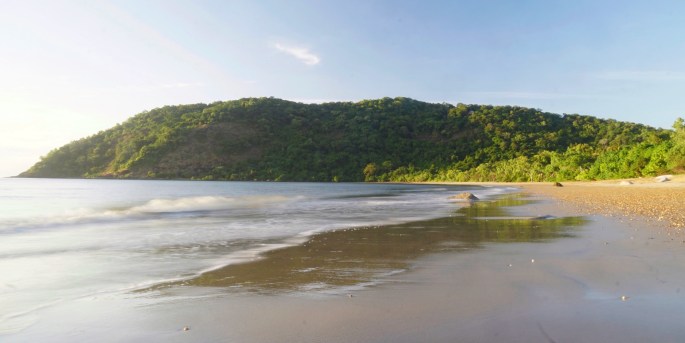
We were also told that after the initial rollout of AZ had begun early up at the ‘tip’ (due to the perceived Covid threat from ‘nearby’ Papua New Guinea’) it had ceased, by government directive, after the blood clotting issue became known, resulting in a huge increase in distrust & reluctance within communities which had previously welcomed the opportunity to have their populations vaccinated.
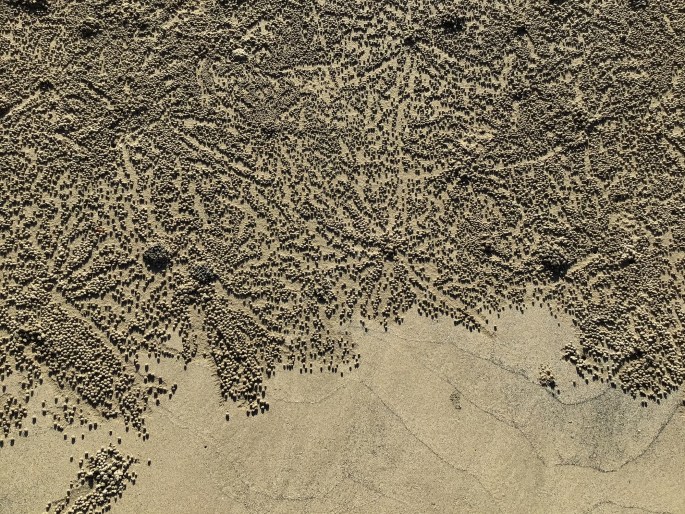
Since then we heard a report saying the age group for Astra Zeneca has been changed from 50+ to 60+. More political spin? At 63 we both feel the Pfizer may be preferable.
So….. no guarantee we would be able to get a second Astra Zeneca shot if we had the first before leaving Mutchilba – so we cancelled & now hope we might get the Pfizer somewhere on the Cape, & if so will remain there long enough to get the second follow up one too. At the time Josh & Jem found out about the availability of the AZ for them in Cairns (surprising given they are both aged around 30 – using surplus AZ stock resulting from community reluctance to take it??), we read online of places on the Cape offering appointments (health clinics & pharmacies), making us think that what has previously been a complete dog’s breakfast, might now show some rationality to the remote area roll out.
In years to come all the above Covid stuff which is at the forefront of our daily lives will likely just be a matter of historical interest & simply raise a smile. I shall hopefully look forward to this moment when I re-read what I’ve written in another decade or so. 🙂
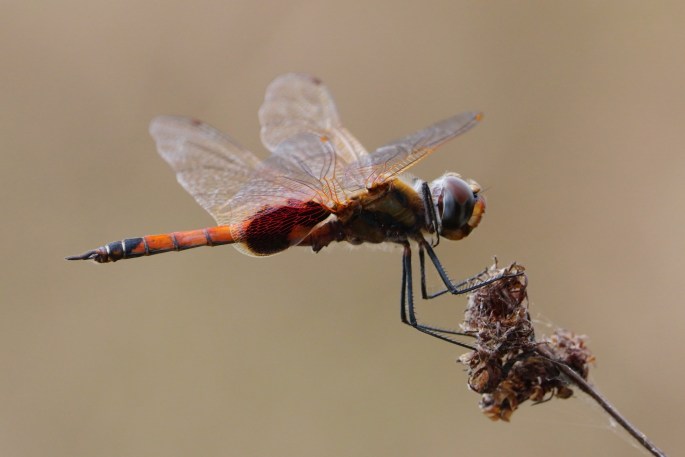
Back to the title of this post ‘the perfect camp spot’. Is there really such a thing & what would make it so? The question has arisen (again) in my my mind after spending 5 nights in a spot which comes very close. More on that below.
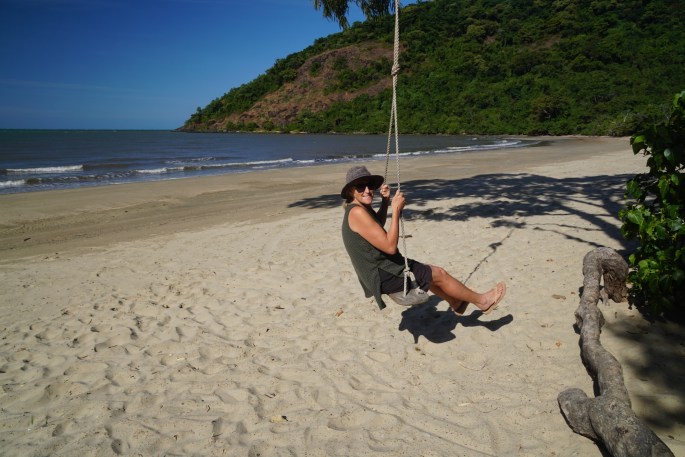
So many things might contribute to the perfect camp spot, & rarely, if ever, are all present together. In no particular order of importance the following, for us at least, is a list of desirable features, together with any comments which may come to mind.
A level site. This seems to have become more important as we have aged. Setting up our ’north/south’ bed so that our heads are slightly higher than our feet, & level side to side is critical to our comfort. Any compromise to this ideal sees the stay restricted to a maximum of an overnighter. As the user of a CPAP machine (for sleep apnoea) the heads up aspect prevents uncomfortable bloating & spectacularly loud farting performances throughout the night!
Privacy & peace. Whilst we don’t mind socialising now & then, our reason for travelling is not participation in the thriving grey nomad social scene which motivates many folk of our age to travel. We far prefer to camp alone, & to enjoy the natural world around us, to absorb it, to wake up in it rather than to simply visit it.
A spectacular, or at least pleasant outlook. By water is always nice. Sea views, lake views , river views. But we try to camp in beautiful places whenever we can. In Australia we are lucky to have extensive landmass which is sparsely populated, making stopping for the night generally an easy thing to do without need to seek permission or to worry about upsetting others. The ease of doing this increases dramatically in remote areas & is more difficult on the east coast where most folk live. There are online resources detailing the location of free camps. These are generally our fallback options as once listed, the listing ensures increasing popularity. Now & then we will camp in the likes of roadside gravel dumps, or disused sections of now upgraded roads, but always out of sight of the road. Some friends use these sort of places far more regularly than us, & visit places they want to see during their days travelling. Waking up in beautiful places as often as possible is our aim.
Free camping No getting around it, price is important to us. We won’t ‘free camp’ at any cost though. Some free camps are overcrowded & overused. Some are simply unattractive. We do utilise paid camps now & then & some are quite pleasant, but it would not be difficult to pay similar or higher weekly amounts to use our own accommodation on a small piece of ground surrounded by many doing the same than it would cost to rent a 3 bedroomed house with all facilities. No criticism of those who enjoy that mode of travel, just not our thing – even if we could afford it. ‘Value’ is a personal judgement, dependent on whether what is offered at a particular price suits. Our recent 5 night stay at Home Rule cost us $20 per night, & we considered it great value in a wonderful location & with excellent facilities.
Solar Relying on the sun to provide the power for our fridge, freezer, CPAP machine, lights, water pump & charging devices is great. We never need mains power, but we do need to be able to park our car so that it is in the sun.
Shade Australian readers will appreciate the importance & value of shade. Those of you in cooler or less sunny parts of the world possibly less so. Shade is a very high value commodity for any camp spot in hot & harsh Australian climate, at odds with the need for sun to provide charging power to our batteries. Occasionally we find shade for the camper & parking for the sun in a single camp spot, but it is a rarity. Preference is for sun given that we can utilise our awning for shade.
Warmth It may surprise some non Australian readers to learn that camping in some places can be a miserably cold affair, southern winters & even central deserts can be freezing. Hence our now well learned preference for the northern half of the continent. However sometimes it can be too hot, so finding a camp spot with a pleasant breeze can make a big difference. Mostly that means coastal, but not always. Inland can be drier & a pleasant relief from coastal humidity in some areas.
Bities Things that bite, sting or irritate are a fact of life when camping is a camping style like ours, involving largely outdoor living. Mozzies & midges (biting sandflies) are the worst, but flies can almost drive a person insane. Mostly manageable, but once in a while enough to see us shut inside the tent eating cold food with the white flag flying & leaving ASAP the following day. Ants can be a real problem too. No one camps on or close to a Bull Ant nest more than once, or allows the foliage which provides the highway for a green ant invasion to touch the side of car or camper!
Fresh Water We can carry sufficient water with us to last us a minimum of 3 weeks, 4 at a pinch. Any camp spot with safe access to fresh water is worth stopping at for a bit longer as it allows us to get some or all of our clothes washing done (in buckets, by hand, well away from the water source if a natural one like a river or lake). In the absence of fresh water sources we will utilise some of our precious drinking water to wash ’smalls’ weekly. MrsTea says “Happiness is a full knicker bag”. Not my place to dispute any cause of happiness! Safe swimming spots (at the camp) are a welcome addition to our routine ‘flannel washing’ when in our usual ‘water conservation mode. In more extreme situations where the freshwater we carry has needed to be kept for only drinking & cooking, we have utilised salt water for washing, but this is rare, & has only been in very remote camp spots where swimming was likely to see us eaten.
Wildlife Nothing is better than being able to observe wildlife in it’s own habitat. A camp spot which provides this is our norm, there are almost always other creatures to see & sometimes to interact with.
Toileting More often than not our camp spots have no facilities. When they do this is a bonus, but generally means it is more likely we will be sharing the spot with others. Depending upon location this can be a worthwhile trade off. Normally we either use our porta potti or we dig holes, use them & then fill them in after either burning the paper in the hole, or burning it in our camp fire. Camp spots which have easy digging close by & are not heavily utilised are valued sites. We try to use our porta potti as little as possible, preferring the hole digging method. Reality however is that there are many places in Australia where the ground is simply too hard or rocky to dig a hole. In those instances we use the porta potti, until we find somewhere suitable to dig a hole and bury it’s (non chemical) contents (or utilise a town based dump point if passing one).
Camp fires For longer stays we enjoy being able to cook on a camp fire. It increases our cooking repertoire when we are able to utilise our camp oven, over what we can do on our gas rings. Makes the need to refill our gas bottles less often too. We are happy to live without a camp fire though. Having one is less common than using the gas. Something which puts us off camp spots occasionally is when we find the ground so covered in the remnants of previous camper’s fires that it s impossible to set up camp without being on top of a black & dirty disused fireplace. Usually if we do have a fire, we’ll utilise an existing fireplace rather than creating a new one. It seems like a considerate way to camp. Places where firewood cannot be collected within a short walk are likely over-used & make the chance of having ’neighbours’ greater. Worst is finding evidence of living trees maimed or felled by those ignorant enough to believe they can successfully utilise the timber to burn!
Phone signal A highly valued feature of any camp spot as it provides us with the connectivity of the internet. Far nicer to sit in camp & do one’s ‘internetting’ in a relaxed manner, than rushing to get it whilst passing through a town . Reality is however that once away from the cities & the east coast it is common to find no signal once more than around 30kms from a town. In remote areas internet signals can be weeks apart at our pace of travel.
Finally, (although I’m sure I’ll think of more desirable camp spot features once I’ve posted this – or perhaps you’ll add to them in the comments) is whether the camp spot is an allowable one. Complying with the rules always feels far more secure than the expectation that a ranger/compliance officer might turn up & tell us to move on just after we have gone through the setting up process. This really only applies to camp spots close to towns/built up areas, more often than not towns where caravan park owners get a say on the council. Mostly in more popular areas , so not an issue for us mostly.
However, (& no doubt we will have our critics), we are not above the occasional ’stealth camp’ when the circumstances seem to fit. It is not something we make a habit of, & we would never feel comfortable camping anywhere where signs explicitly stated it was not allowed, but once in a while we have been a bit naughty & got away with it. Probably the one which surprised us most was years ago when we had our bus-based motorhome. We camped a metre from the shore of Lake Burley-Griffin , behind the National Museum in Canberra. From our prime vantage point we could see Parliament House, well within easy rocket launcher range (If we had been terrorists).

Up here, near Cooktown, there is a beautifully scenic spot around 35kms south of town where free camping is permitted at Archers Point. The sea views over coral reefs to Rocky Island & beyond are stunning, but it is a very exposed & a very windy spot at which to camp. About 37kms west of town free camping is permitted at Isabella Falls, a pleasant & very popular spot for day visitors, with small & difficult to access (with a trailer) camp spots under trees (little to no solar). That’s it as far as ‘Permitted’ free camps go in a large area. That is until we found ‘our spot’. A spot I will not name as tourist publications we have seen since say ‘no camping allowed’. Although we wondered if this might be the case there was no ‘No Camping’ sign, (as we had seen at other locations we passed on the way there) & the ubiquitous crocodile warning sign said “Do not camp too close to the water” – possibly inferring that camping further back from the water was ok?). There were aspects to the camp which made it highly desirable, & so we made a day visit there to suss out locals who lived nearby. We spoke to a number of folk, & the 100% consensus was that they would have no problem with us camping there, & that because the Cooktown Expo & celebrations were in full swing whilst we would be there that the ‘compliance officers’ who visit now & then would most likely be too busy with other duties & thus very unlikely to turn up & turf us out. We accepted the risk of being turfed out & decided to chance a night there.


One night became 5 nights & we came to know a number of friendly locals by name, as well as their dogs they walked on the beach locally. Sometimes they would stop by our camp for a cuppa & a chat, sometimes just a nod & a wave.
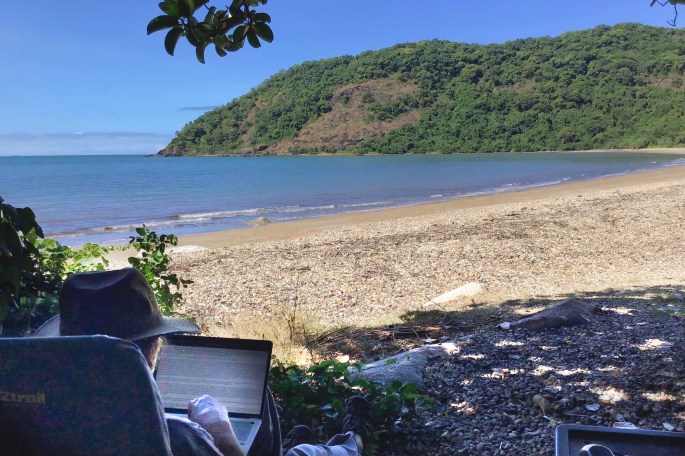
There were two possible camp spots, the one we were able to manoeuvre into….. just, & one other suitable only for a single vehicle. That one had different folk camp in it for 4 nights out of the 5.

‘Our’ spot was stunning, with absolute beach frontage, but safe from the resident large croc we were told about (but never saw), with views right along the beach. At the far end of the beach a steep & tall rain forest covered hill stuck out into the sea forming one side of the small bay & protecting us perfectly from the predominant south easterly winds. A very sheltered location, accessed by a short & narrow tree-lined 4wd track off the bitumen turning circle where day visitors & dog walkers would park. Walking to the public toilet located alongside this turning circle took a couple of minutes max. A pleasant & spacious ‘long drop’, shared with a Giant Mantis, possibly the greenest grasshopper I’ve ever seen & a large Huntsman spider (named ‘Harry’ by MrsTea). Best of all the little pocket of large granite boulder strewn rainforest at ‘our’ corner of the beach afforded us day long shade to sit in whilst the solar panels on top of the car received sufficient solar input each day to keep things running. We set up camp with the Tvan opening into the little rainforest hidey hole, without need to set up the tent. We also took care not to ’spread out’, so no washing line etc. (But a few smalls dried nicely & discreetly on the hot rocks). No bities of note to contend with. We enjoyed plenty of ‘people watching’, & getting to know a few 4 legged companions. Out at sea a variety of passing ships, yachts & even a couple of square riggers held ongoing interest, & the daily sunrise was always worth watching. Many fishermen came & went, all empty handed, although we watched plenty of baitfish breaking cover of the water to escape their pursuers. Some mornings they seemed to be doing acrobatics just for fun. Best though, & the absolute highlight of our stay were the daily visits by a huge Manta Ray. On 4 days out of the 5 it spent hours cruising up & down the bay. A wingspan of over 3 metres, possibly as much as 4 metres we estimated. Locals told us that such sights in the bay were a rarity with visits like this having months , sometimes years between them ……… and we were witness to this for hours every day. It didn’t show the morning we left.

All this & just 6 kms from Cooktown. Despite this no phone signal, but our site was perfectly level, the weather warm to hot with pleasant light breezes, & at night time we were alone.
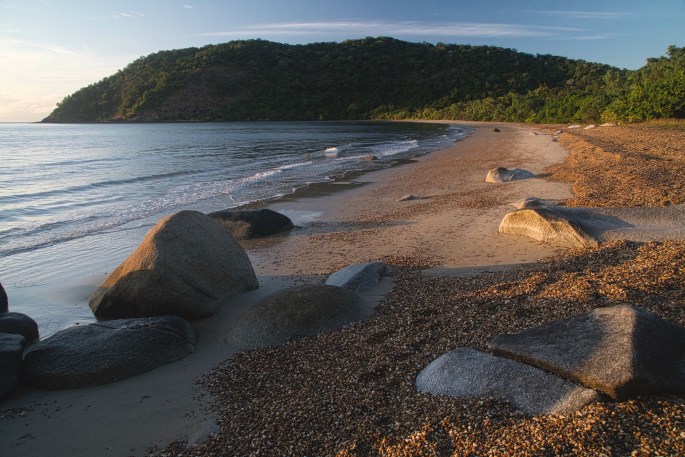
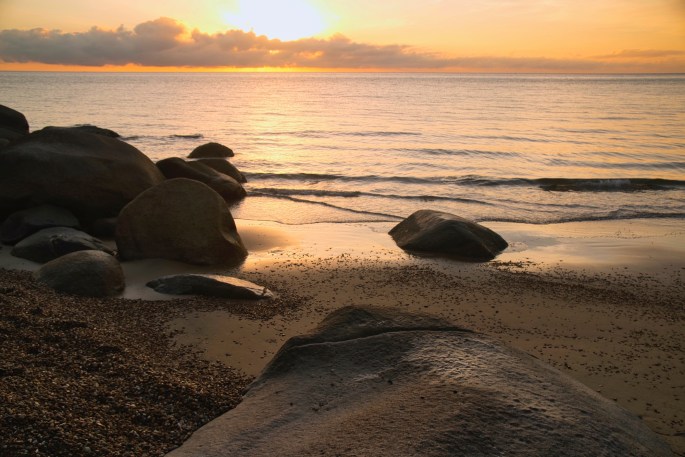


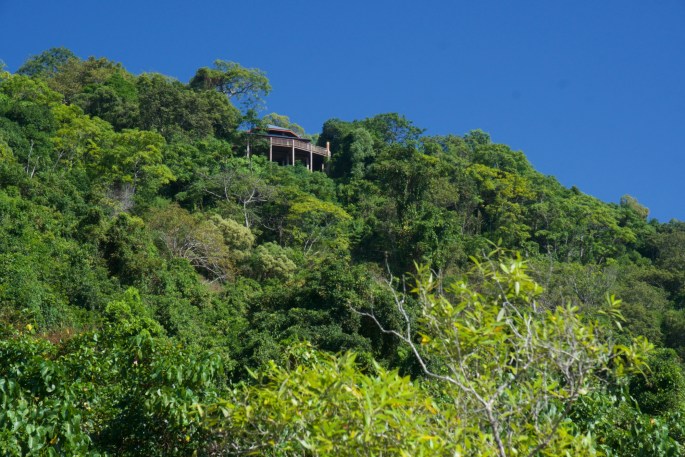
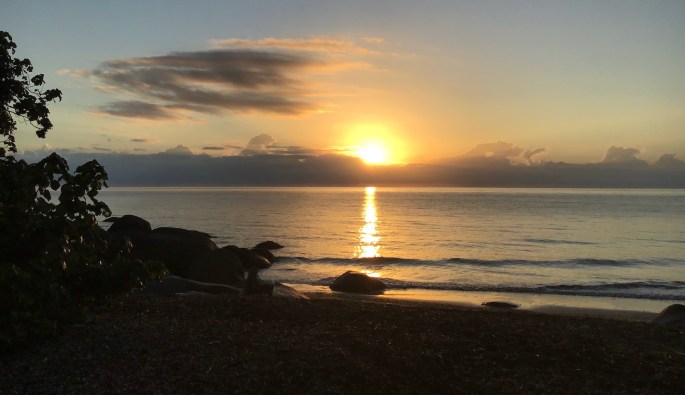
Yep, by rights we shouldn’t have been there & we don’t encourage anyone to follow suit, but we have no regrets & consider our 5 days there a wonderful privilege. It rates, perhaps not as our all time best camp spot, but certainly up there with some of the best. We left the spot as just we found it, & felt ok about what we did having been told by locals that the council compliance officers existed primarily to ‘encourage’ campers to stay in the town’s numerous caravan parks.

NB. The Cooktown council does allow free camping at the racecourse, but with , in our view, overly restrictive expectations no doubt intended to keep out the ‘riff raff’ like us. To stay a vehicle must contain an inbuilt permanent shower (despite shower blocks being available) & inbuilt grey & black water tanks & an inbuilt fixed permanent toilet. A dump point is supplied, but running our grey water into portable containers, or use of a portable toilets is not allowed, & is policed. We wouldn’t choose to stay somewhere like that even if we did comply. We suspect that a number of the visitors to the beach in the motorhomes which rolled up for brief visits daily may have contained folk who were perhaps more than a little envious at our luck.
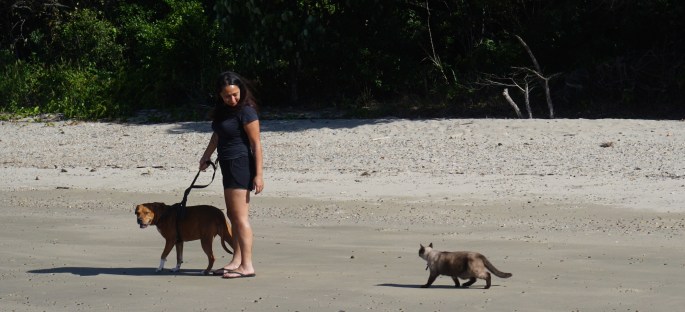
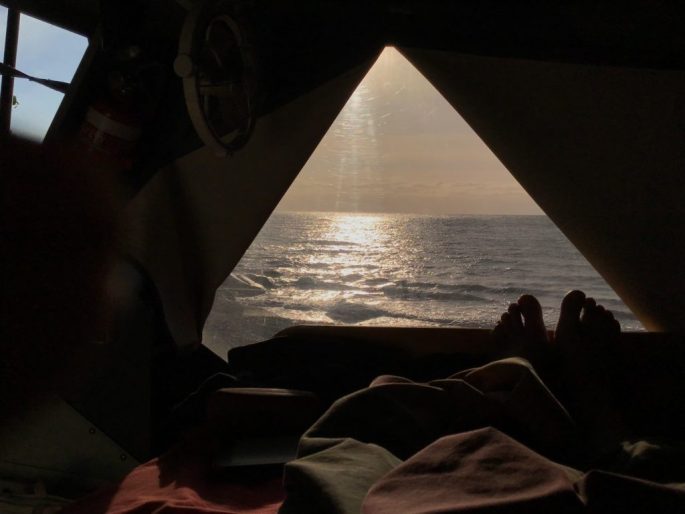
We left Cooktown via Battlecamp Road a few days ago after restocking our supplies, re-fuelling & collecting an expected package from the Post Office. Battlecamp Road, named after a massed but failed aboriginal attack on white settlers back in the gold rush days, when 500 aboriginals with spears & boomerangs found themselves no match for the settler’s repeating rifles (& subsequently took up guerrilla warfare tactics to try to save their country from the settlers). Back in 2008 when last here the road was unsealed. Recent documentation referred to it as a 4wd road, but we found much of it now sealed. The mountain range it took us through is still very steep in places, water level across the concrete base of the ford on the Normamby River was lower than expected. We have stopped at another pleasant camp in the Rinyirru National Park at the ‘Horseshoe Lagoon’. A large water lily covered lagoon, like many in the area when several rivers flood huge areas during the wet season leaving large lagoons between the rivers as the dry takes hold. These lagoons & waterholes become vital refuges for birds & other wildlife, including the saltwater crocodiles whose location changes from season to season as water flows allow. We haven’t seen any crocs here yet, but swimming is most certainly not an option. The edges of the water are boggy where feral pigs have churned it up, so even collecting any water by bucket would be most unwise. It’s a pretty spot, albeit quite windy at times, & we met our site’s previous occupants who kindly left their camp fire smouldering for us, allowing for an easy fire building after a bit of wood collecting. The dead wood is dense & hard, & makes great coals for the camp oven. So far we have only baked potatoes, but tomorrow night is pizza night I’m told.
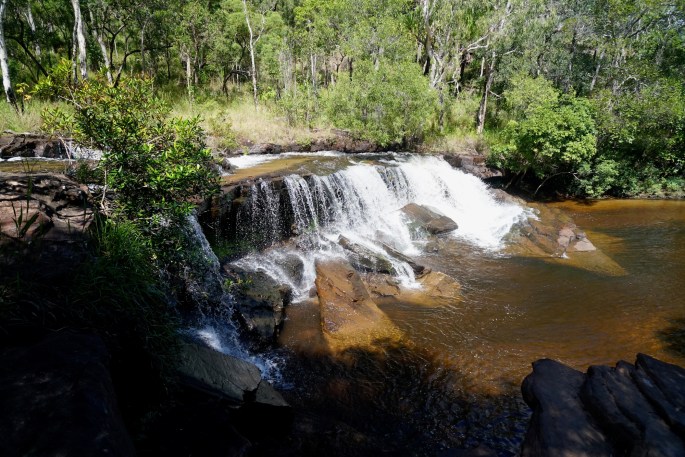
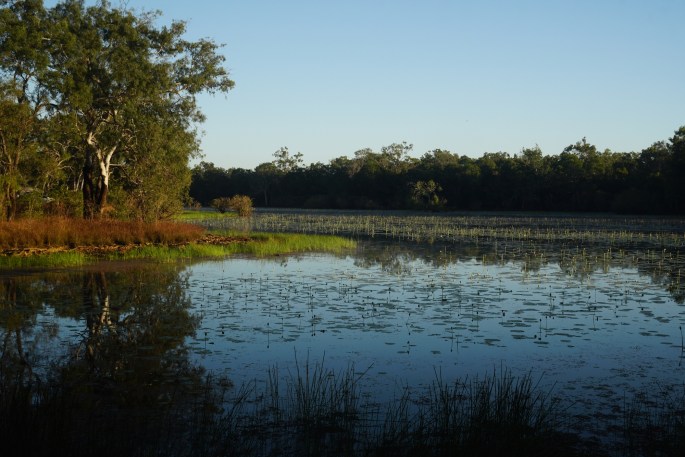
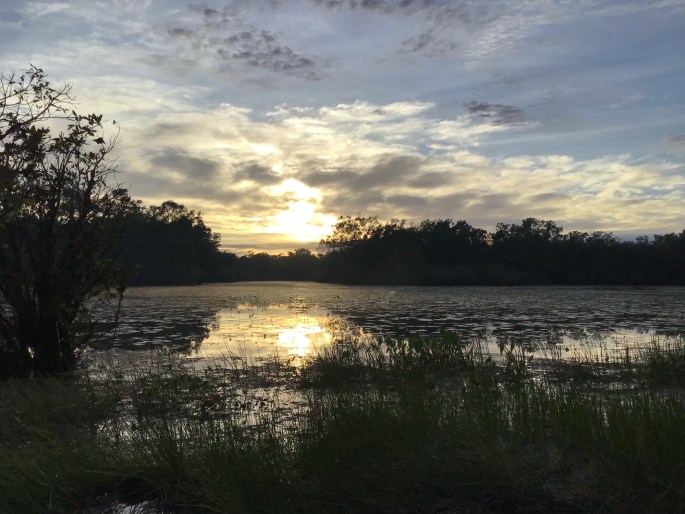
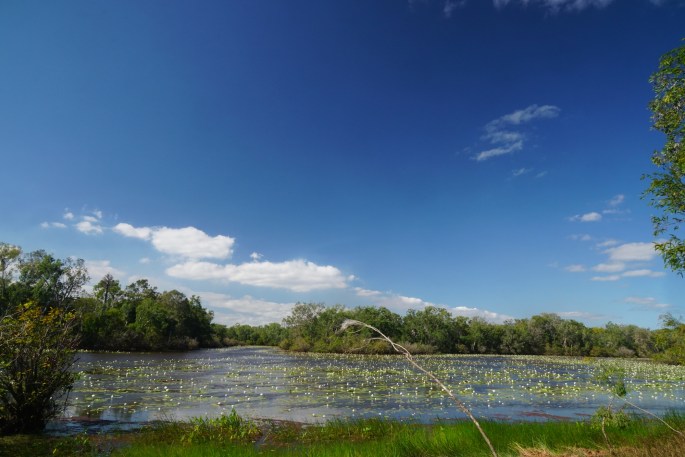
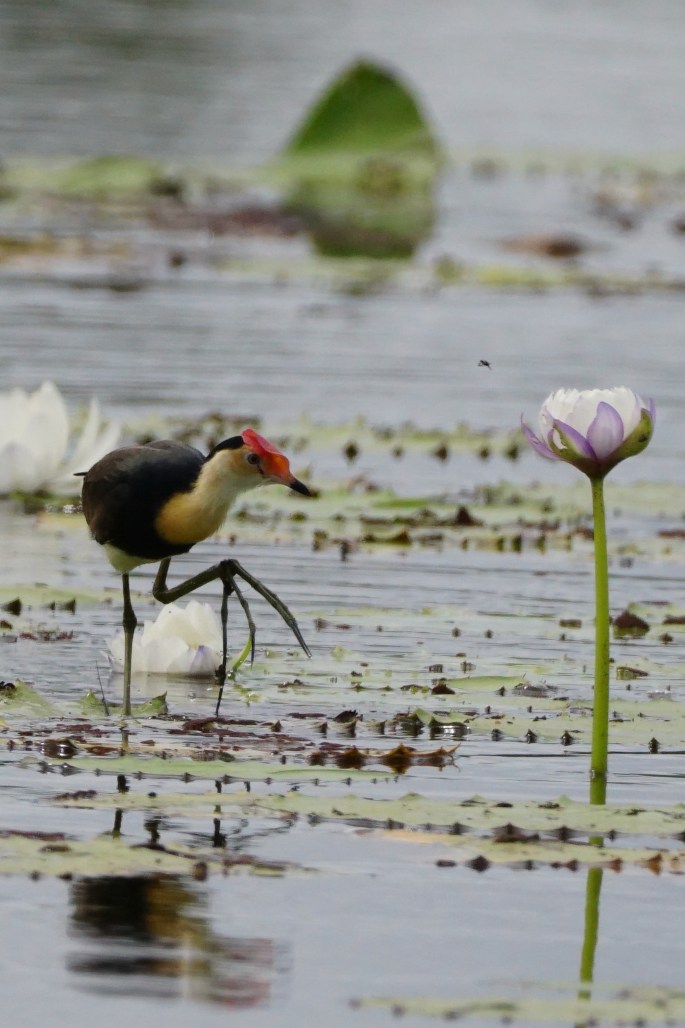
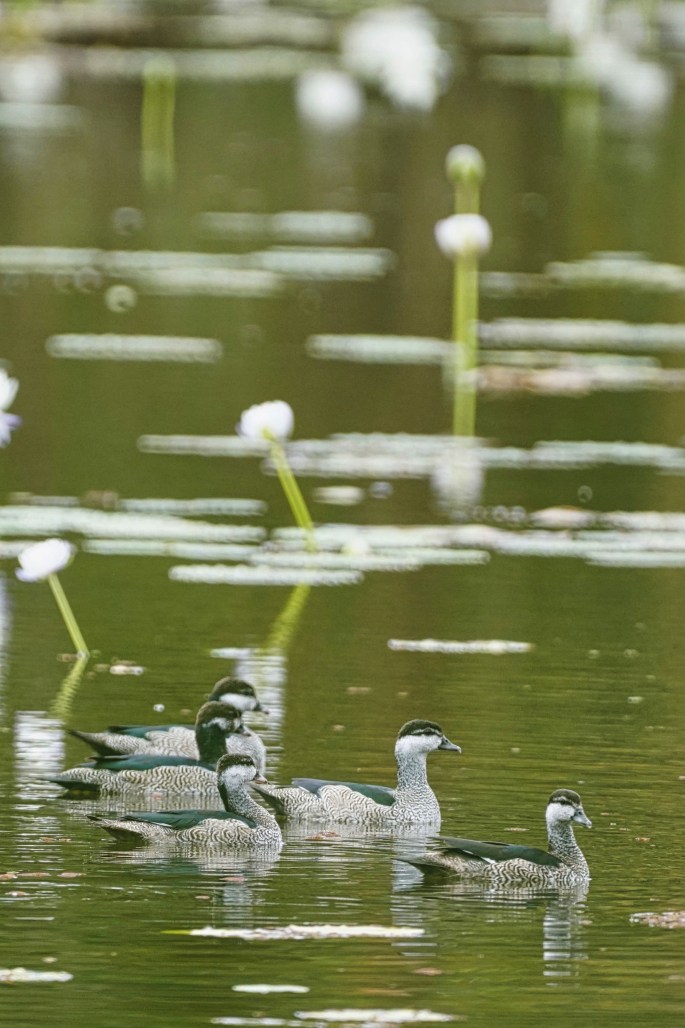
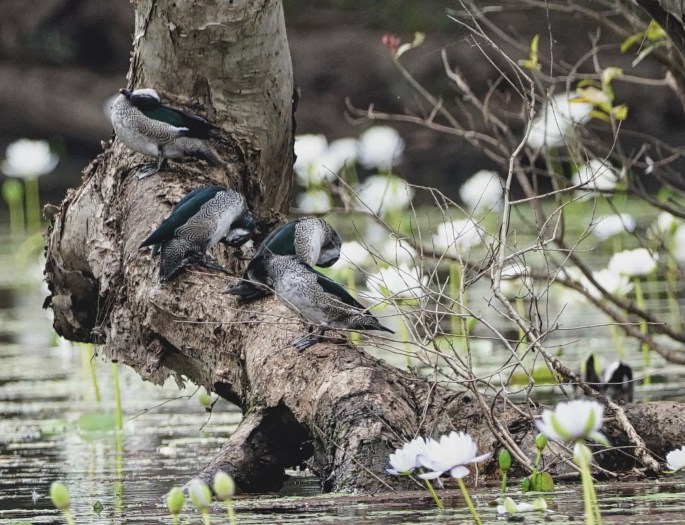
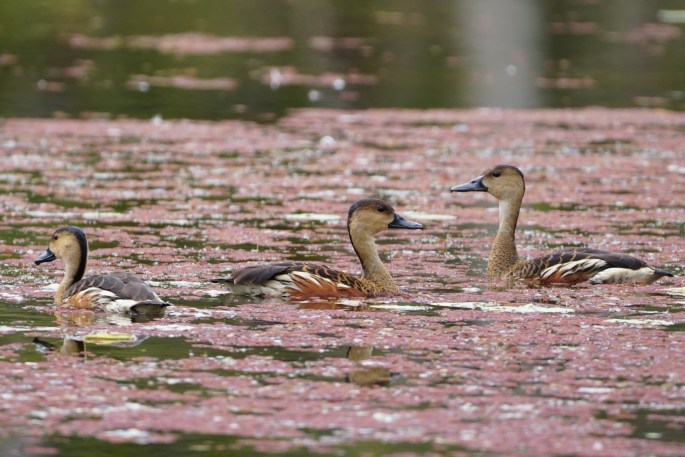
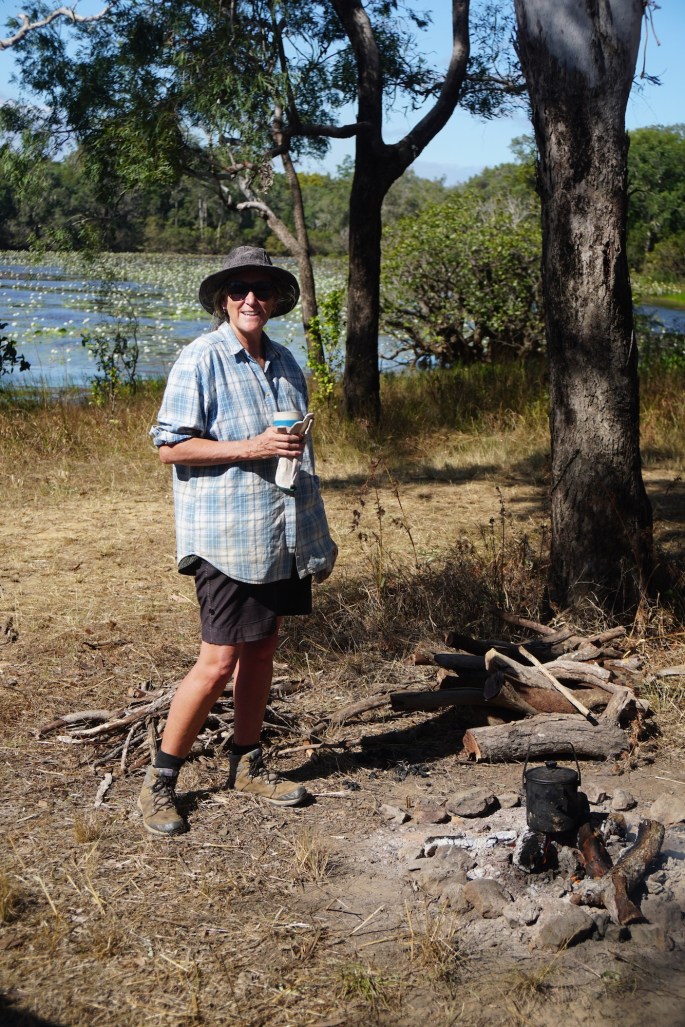
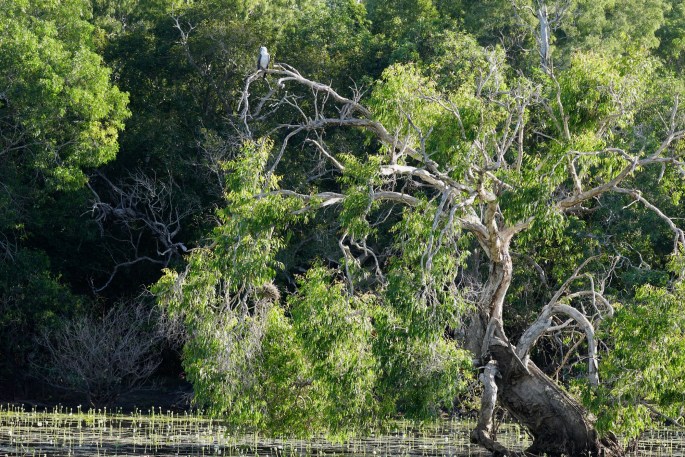

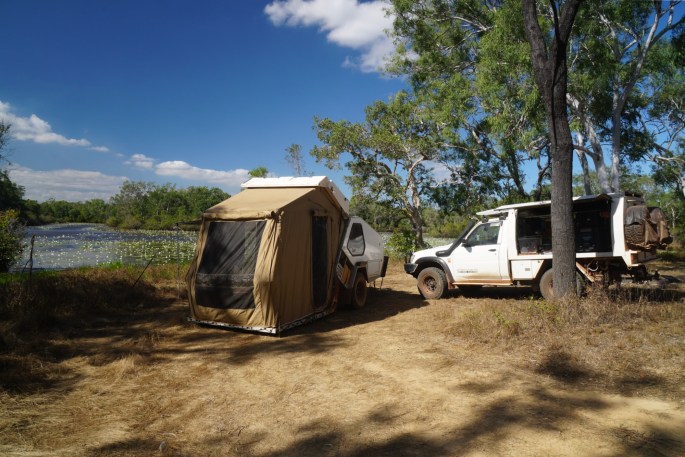
Pizza night was enjoyable. This morning prior to leaving we had a visit from a ranger as we were packing up. He enquired as to whether we had seen anything of the croc. We hadn’t, but he informed us that the largest known in the park this year was right here in Horseshoe Lagoon. Just as well we hadn’t been tempted to take a dip! 🙂
All the best to every one of our readers. We hope you are still enjoying catching up with our travels. Next will be Laura Dance Festival, at the beginning of July. Where we’ll be between now & then is yet to be determined. After Laura we think we will be returning to Balurga station, which we visited last July, for a couple of weeks & then northward bit by bit.


Thanks for another great read Cuppa. As is usual, I enjoyed it immensely. I hope that Julie and yourself are having fun and enjoying the Cape.
Very enjoyable Cuppa, I will be in Cooktown about the 28th July after Xmas in July at Mareeba. I don’t think my 5’er would get into any of your free camps. But Isabella Falls might be the go. Regards to Mrs Tea.
PeterH
Another delightful read Cuppa and mrs Tea I love the photos that you take keep it up as I enjoy reading about your travels
Awesome photos as always
Definitely still enjoying every bit of the blogs
I was about to say not sure about, but it’s more like we’d never stay that close to the possibility of salties in the water, you’re a braver man than I Gunga Din
Keep the blogs coming, we finally have our car back with its new transplant and expect to be on the road soon but no remote stuff for us unfortunately due to health reasons, but the road never the less
Stay safe
Frank and Brenda
A lovely pre bedtime read, loved the videos. Wish your Mum could see your travels and the beautiful sights. Keep blogging and take care. Love Celia xx
We really enjoy reading your blogs. Keep them coming!
Your travels are something we would all love to do but unfortunately are not as able or as venturous as you two.